Spotlight on Danny Ghitis
Jan 22, 2015
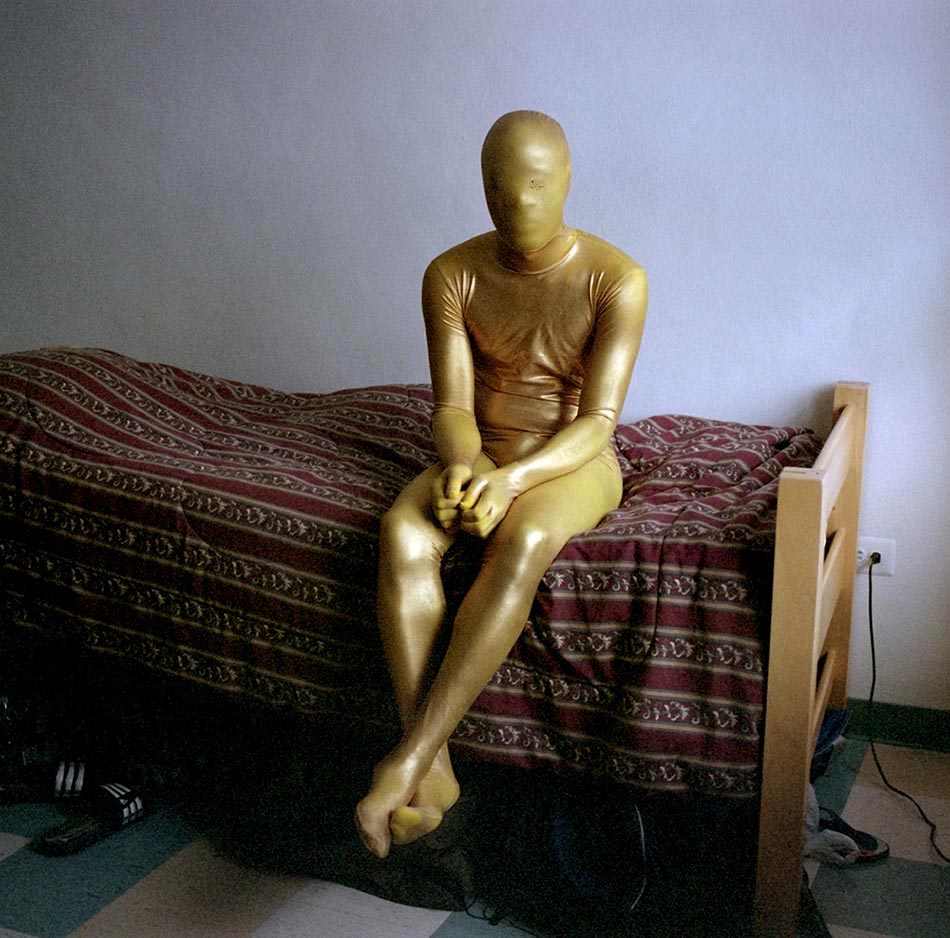
Editor's note: No nudity but not safe for work.
TID:
Thanks for being open to this, Danny. This image, and the series, was visually very striking. Can you tell us the backstory of the image?
DANNY:
This is part of a project about a community website for kinksters called Fetlife.com which has thousands of members from around the world. I became interested in photographing the subject matter during the advent of marriage equality legislation in NYC.
TID:
Since this is part of a larger body or work, can you talk about what drew you to this and how you began to build relationships within the community? What was your motivation?
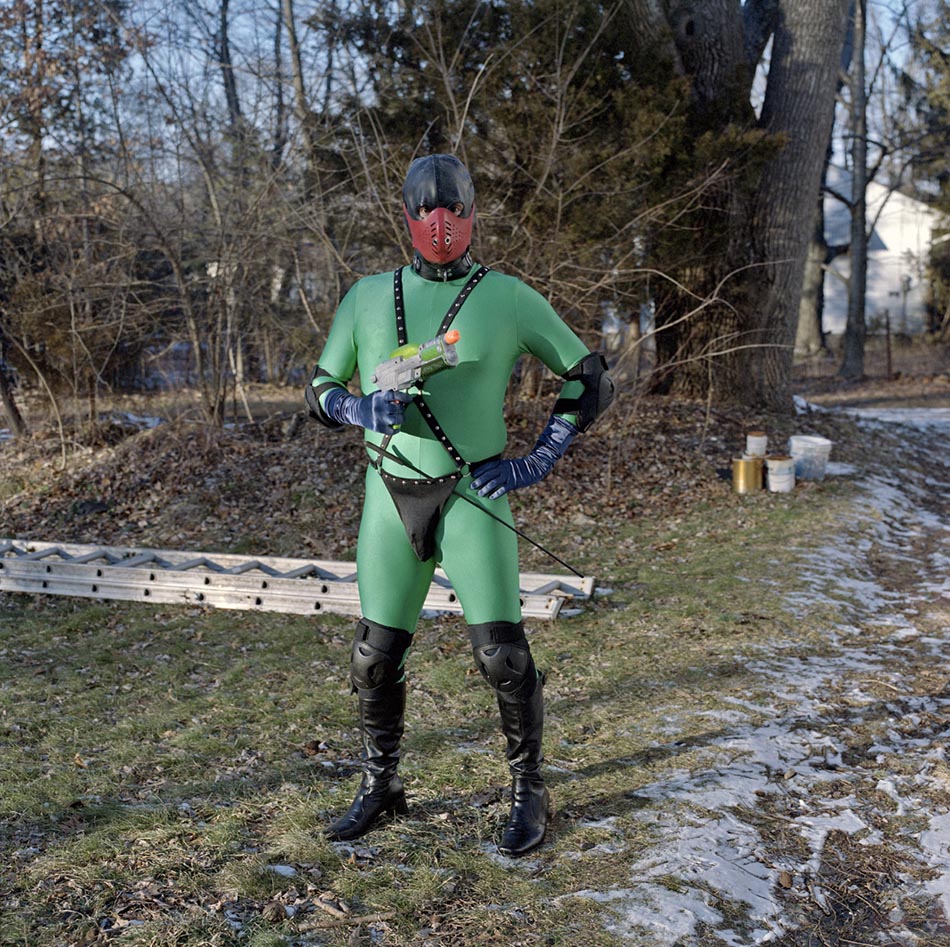
DANNY:
There was much chatter about sexual identity at the time and my ears perked up when I heard from a friend about this site. I wanted to confront what I felt was my own ignorance about the complexity of sexual identity in a way that was visually interesting and would be an eye-opener for myself. I signed up for Fetlife, which is free, and made a profile stating my project idea. I slowly started gaining trust in the community by photographing some well-known individuals, such as The Baroness, which allowed me to get in front of more subjects.
TID:
When you first started this series, what were the first thoughts that you had going into it?
DANNY:
I was slighlty apprehensive at first, but it was exciting to be starting a new project. I felt I had struck gold in discovering this sight and committing to a portrait project, which I’d never done before, especially using medium format film. I really wanted to find a way to tell a story related to sexual identity while there was heightened awareness in the area, but I didn’t want to be literal and discuss marriage equality or anything too dependent on time. The prospect of going into stranger’s homes that sometimes enjoy tying people up and whipping them was a little spooky, though I quickly dispelled my own prejudices. Everyone I met was very friendly and welcoming.

TID:
What challenges did you encounter while working to making these images, especially at the beginning?
DANNY:
My first subject was potentially the most difficult- a transgender “age-player” who dresses as a young child and discussed sleeping with men who had a proclivity toward pedophilia. I had to wrestle with the fine lines right away, which propelled me deeper into the project. I saw how deep the rabbit hole goes.
TID:
How did you handle and overcome these problems? And can you also talk about your execution technically of the images?
DANNY:
To address the uncomfortable nature of the project, I simply dove in further to understand better. It was clear I wouldn’t feel satisfied until I met many more subjects and asked them questions, observed their lives firsthand, and developed a more nuanced relationship with those I thought different from myself. As is often the case, I learned that most people are not so different from myself; they just express themselves through an unfamiliar medium.
It was certainly challenging to photograph people consistently using natural light in their apartments. I wanted the photographs to feel accessible and natural, not produced or distant. Before going to the subjects’ homes I had to had a conversation with them about their space and lighting situation and find a mutually convenient time- not an easy task- but it helped me get to know them at the same time. By the time I arrived at an apartment I had a decent idea of what kind of person I would encounter.

TID:
What surprised you about the main image? What has surprised you about the making of these images with this group of people?
DANNY:
I found this subject somewhat socially awkward and tough to relate to. He was uncomfortable in his own skin, so to speak, and felt more at ease while wearing his zentai outfit. When I look at this image I feel a sense of calm, in contrast to the chemistry I felt with the subject.
TID:
Now, onto the moment. Can you tell us specifically what was going on both here and in your mind leading up to the picture?
DANNY:
This subject is a young student at a local college and the photo is taken in his dorm room. When I arrived he was standing among a crowd outside the dorm room because the fire alarm had gone off forcing everyone out of the building. Totally innocuous-looking guy. He seemed pretty self-conscious until he put on the suit. I tried a variety of ideas, though I sort of felt the picture would be of him on the bed. It helped to let him get used to the feeling of being photographed, including using my digital camera and stalling by talking with him.
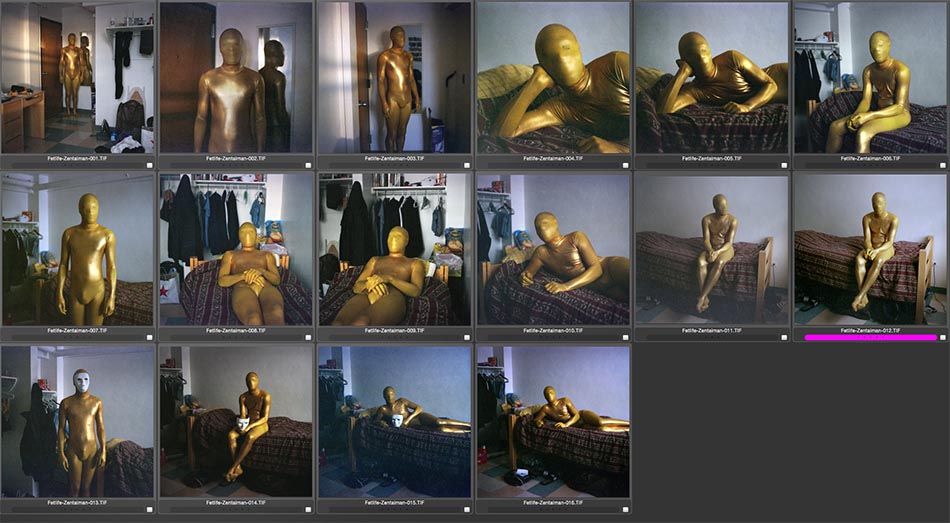
TID:
What have you learned about yourself in the process of making these images?
DANNY:
It may sounds cliche, but I am more confident in my own sexual identity after this project and being faced with all sorts of flavors, if you will. I’ve always felt comfortable being a pretty average heterosexual male, sexually speaking, but putting myself in front of others with interests I’d never heard of made me think. I knew I had misconceptions that I wanted to address, which is an ongoing motivation for exploring the world through photography. Deepening my understanding through firsthand experience.
TID:
What have you learned about others?
DANNY:
In a way, nothing. People are people, no matter where they are and how they dress. I think this project reinforced that knowledge by expanding it into a new area of uncertainty.
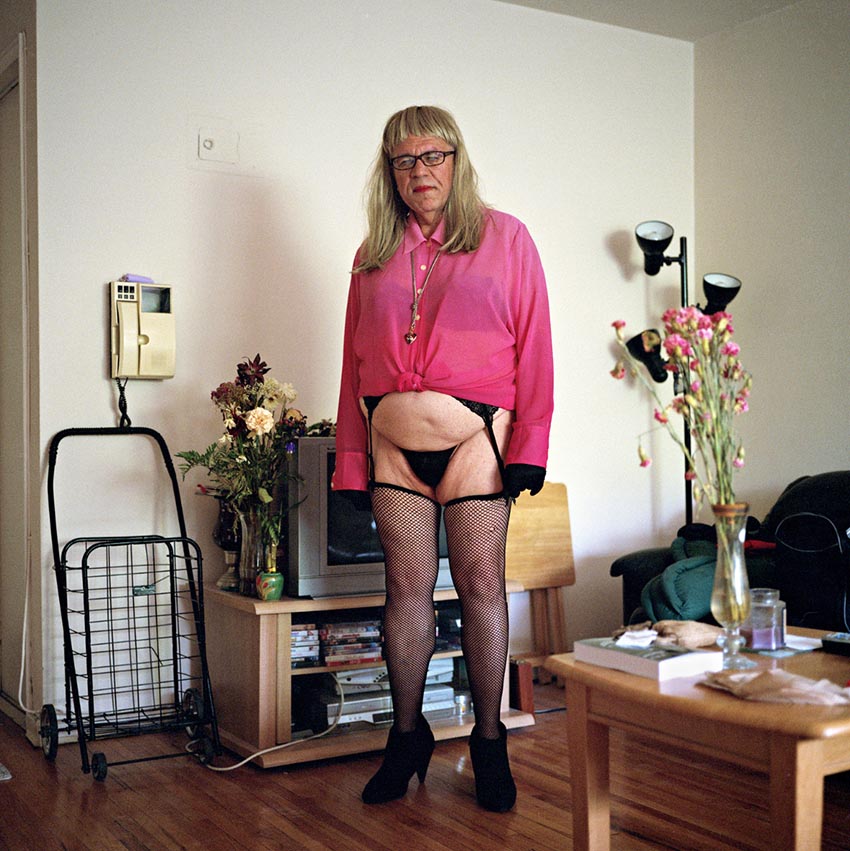
TID:
In conclusion, what advice do you have for photographers?
DANNY:
A part of me was afraid to dive into a project about extremes in sexuality because, like everyone, I have a fear of the Other..."Maybe I’ll end up like them,” or “Maybe I’ve been lying to myself about my identity all this time.” So I say, identify the things you’re afraid of, and go photograph them. I don’t mean war. I mean the things that you fear on an existential level, your personal wars, that you feel challenge who you are as a person. That requires taking a hard look in the mirror. Fortunately, the process of making the photographs can help you work through that self-discovery.
:::BIO:::
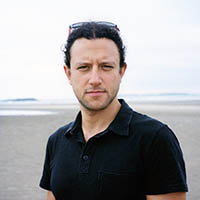
Danny Ghitis (b. 1982) is a Brooklyn-based editorial and commercial photographer whose personal projects revolve around the relationship between memory and identity. The son of Jewish South American immigrants, he moved around a lot as a child, which helped him to develop a lifelong interest in documenting the lives of strangers and culturally ambiguous communities. With his work he attempts to pose questions, rather than answers, to challenge expectations and encourage introspection. He is a frequent contributor to The New York Times, and tends to spend all his money on traveling and chocolate. When he’s not taking pictures he enjoys rock climbing and playing Dungeons and Dragons with his nerdy friends.
Clients include Adbusters, AFAR, Bon Appetit, Billboard, Bloomberg Businessweek, BUST, Chicago Tribune Magazine, Chronicle of Higher Education, CNN, Global Strategy Group, Gothamist, Maclean’s, The New York Times, Newsday, Rolling Stone, Stern, and TIME.
Danny has been recognized by American Photography 29 and 30, Magenta’s Flash Forward, nominated for PDN's 30, the Nikon Emerging Talent Award, the Hearst Photojournalism Championship, College Photographer of the Year, the National Press Photographers Association, University of Florida’s Scholars Program, nominated for UNICEF Photo of the Year, and the Eddie Adams Workshop.